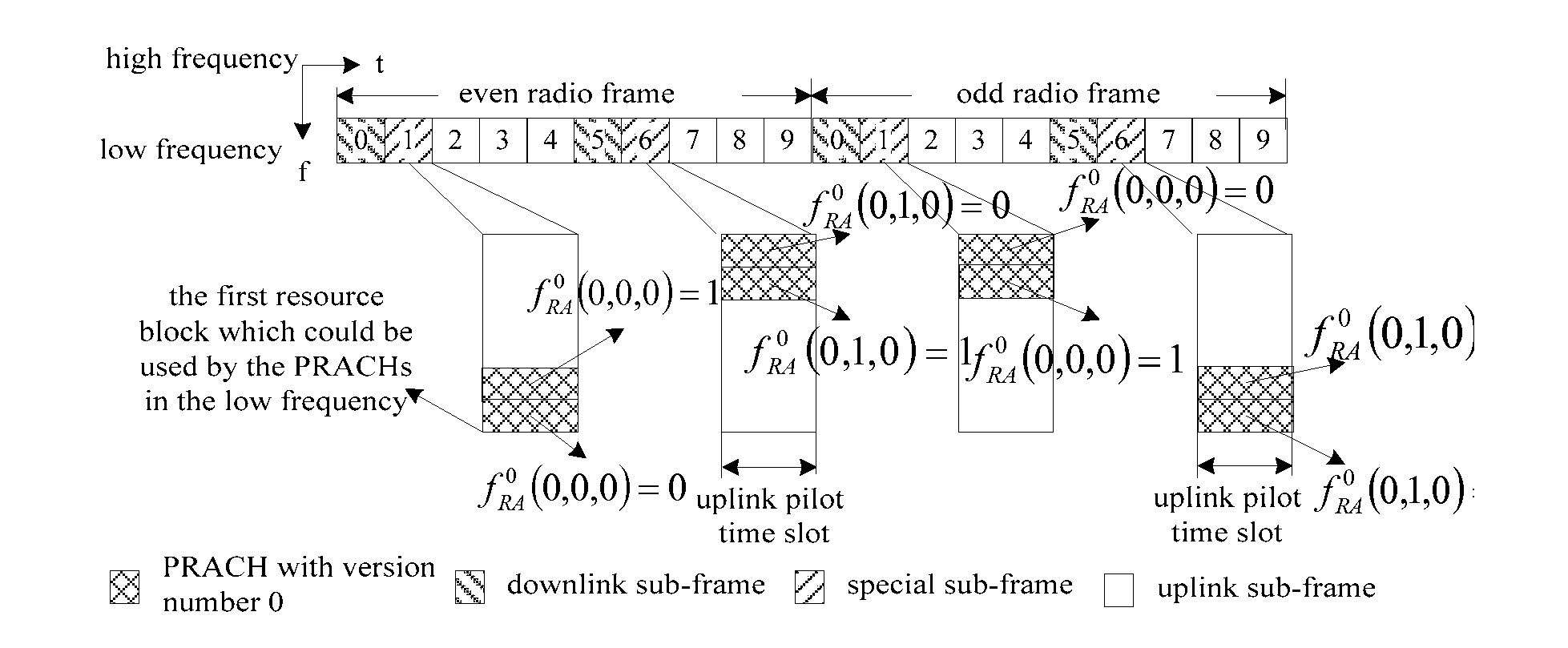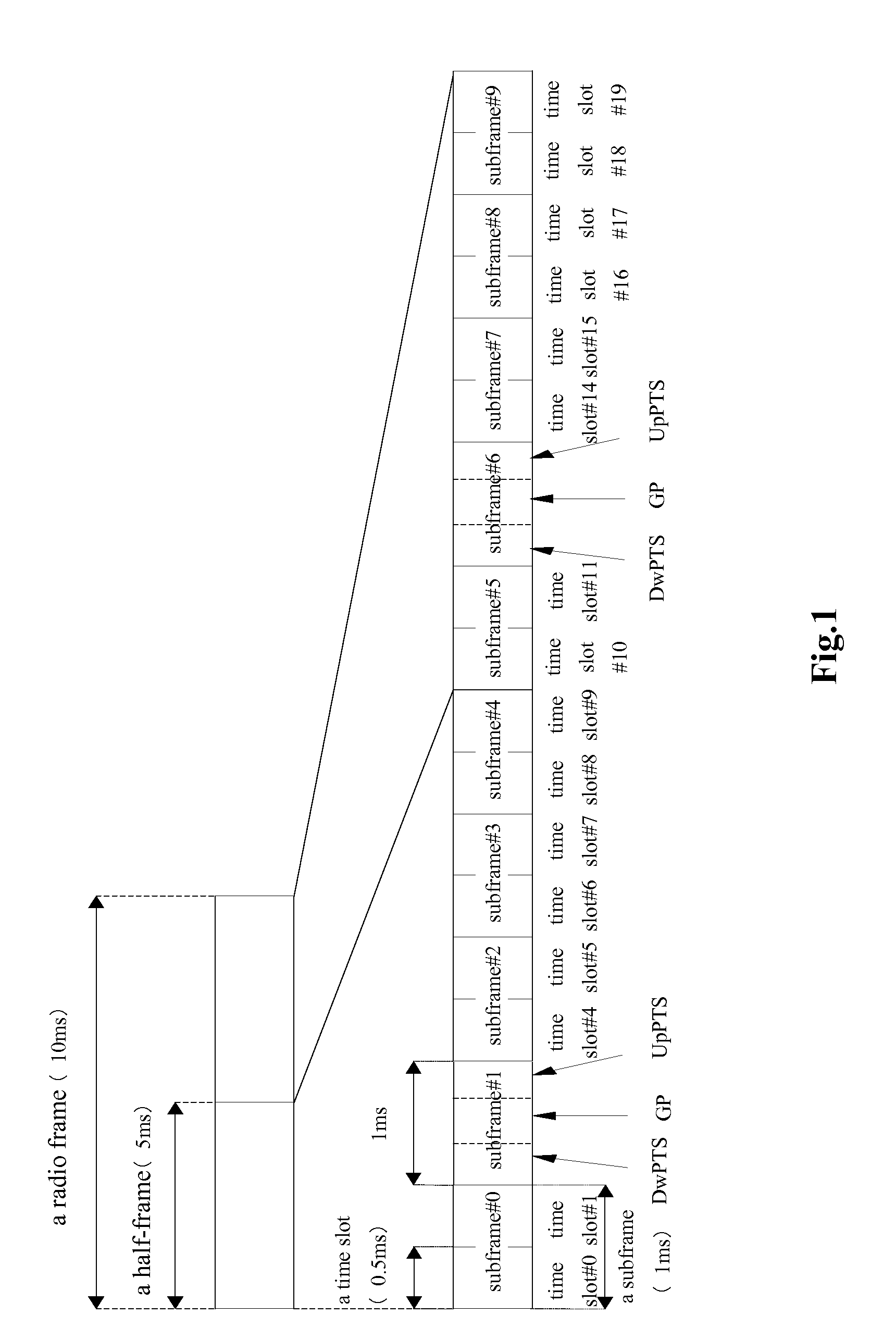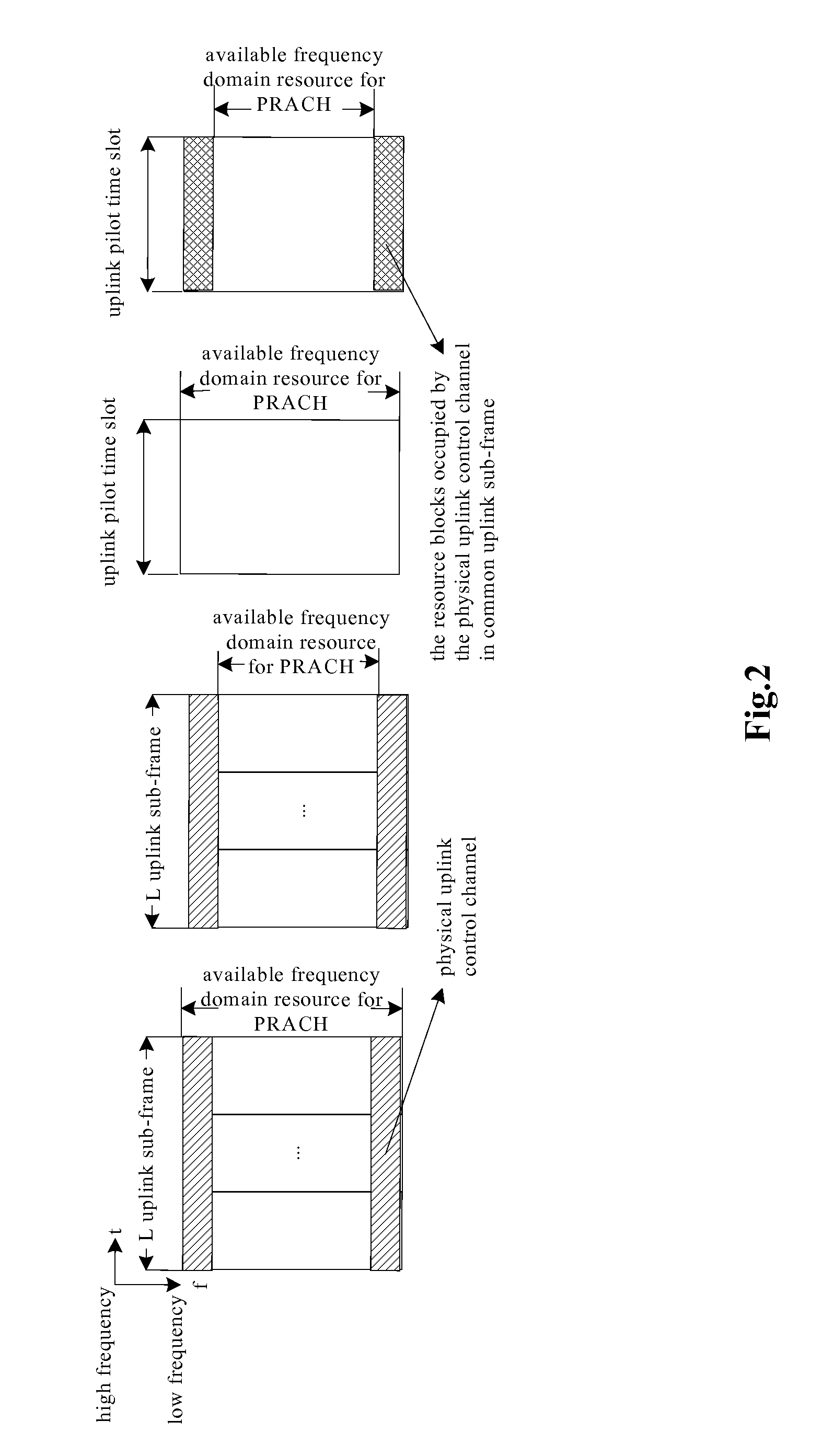Method for Mapping Physical Random Access Channels
- Summary
- Abstract
- Description
- Claims
- Application Information
AI Technical Summary
Benefits of technology
Problems solved by technology
Method used
Image
Examples
first embodiment
The First Embodiment
[0082]It is assumed that the density of the PRACH is D (D can take the values of 0.5, 1, 2, 3, 4, 5, 6 or 10 PRACH / 10 ms); the version number is R; the serial number is NindRA=0, 1, . . . , R┌D┐−1; the index of usable PRACH of certain cell within one random access cycle is d (also known as PRACH index or density index in a cell, d=0, 1, . . . , ┌D┐−1); version number is r (rε[0, R−1]); the number of the conversion points from downlink to uplink in 10 ms radio frame is NSP; and the number of certain format of PRACH received by the time domain in a half frame is NRAHF(i).
[0083]PRACH numbering: the PRACHs are numbered according to the sequence of increasing the density index first, and then increasing the version number, namely NindRA=r┌D┐+d, wherein NindRA=0, 1, R┌D┐−1, d=0, 1, . . . , ┌D┐−1, r=0, 1, . . . , R−1.
[0084]Frequency Domain Mapping
[0085]For Preamble Format 0-4
[0086]The PRACHs with the same time domain location and version number r are mapped from two sid...
second embodiment
The Second Embodiment
[0096]Supposing that the density of the PRACH is D (D can take the values of 0.5, 1, 2, 3, 4, 5, 6 or 10 PRACH / 10 ms); the version number is R; the serial number is NindRA=0, 1, . . . , R┌D┐−1; the index of usable PRACH of certain cell within one random access cycle is d (also known as PRACH index or density index in a cell, d=0, 1, . . . , ┌D┐−1); version number is r (rε[0, R−1]); the number of the conversion points from downlink to uplink in 10 ms radio frame is NSP; and the number of a certain format of PRACH received by the time domain in a half frame is NRAHF(i)
[0097]PRACH numbering: the PRACHs are numbered according to the sequence of increasing the density index first, and then increasing the version number, namely NindRA=r┌D┐+d, wherein NindRA=0, 1, R ┌D┐−1, d=0, 1, . . . , ┐D┐−1, r=0, 1, . . . , R−1.
[0098]Frequency Domain Mapping
[0099]For Preamble Format 0-3
[0100]The PRACHs with the same time domain location and version number r are mapped from two side...
third embodiment
The Third Embodiment
[0121]Supposing that the density of the PRACH is D (D can take the values of 0.5, 1, 2, 3, 4, 5, 6 or 10 PRACH / 10 ms); the version number is R; the serial number is NindRA=0, 1, . . . , R┌D┐−1; the index of usable PRACH of a certain cell within one random access cycle is d (also known as PRACH index or density index in a cell, d=0, 1, . . . , ┌D┐−1); version number is r (rε[0, R−1]); the number of the switch points from downlink to uplink in 10 ms radio frame is NSP; and the number of certain format of PRACH received by the time domain in a half frame is NRAHF(i).
[0122]PRACH numbering: the PRACHs are numbered according to the sequence of increasing the density index first, and then increasing the version number, namely NindRA=r┌D┐+d, wherein NindRA=0, 1, R ┌D┐−1, d=0, 1, . . . , ┐D┐−1, r=0, 1, . . . , R−1.
[0123]Frequency Domain Mapping
[0124]For Preamble Format 0-3
[0125]The PRACHs with the same time domain location and version number r are mapped from two sides to...
PUM
 Login to View More
Login to View More Abstract
Description
Claims
Application Information
 Login to View More
Login to View More - R&D
- Intellectual Property
- Life Sciences
- Materials
- Tech Scout
- Unparalleled Data Quality
- Higher Quality Content
- 60% Fewer Hallucinations
Browse by: Latest US Patents, China's latest patents, Technical Efficacy Thesaurus, Application Domain, Technology Topic, Popular Technical Reports.
© 2025 PatSnap. All rights reserved.Legal|Privacy policy|Modern Slavery Act Transparency Statement|Sitemap|About US| Contact US: help@patsnap.com



